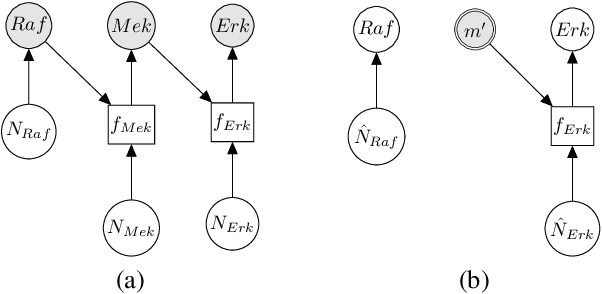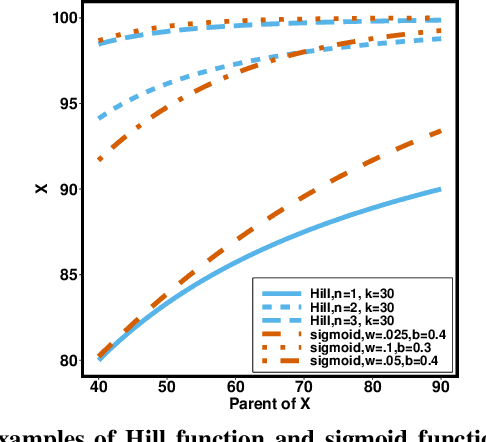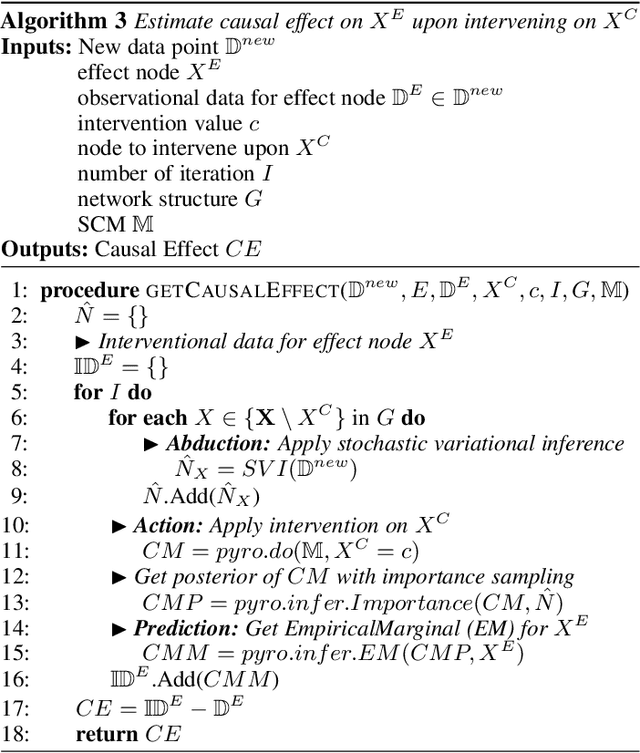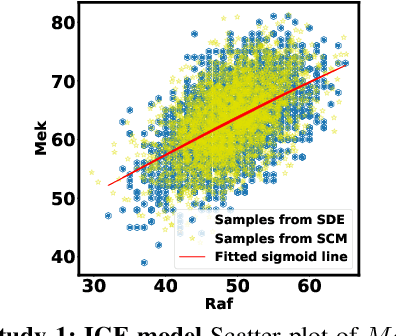Robert Ness
Knowledge Guided Representation Learning and Causal Structure Learning in Soil Science
Jun 15, 2023



Abstract:An improved understanding of soil can enable more sustainable land-use practices. Nevertheless, soil is called a complex, living medium due to the complex interaction of different soil processes that limit our understanding of soil. Process-based models and analyzing observed data provide two avenues for improving our understanding of soil processes. Collecting observed data is cost-prohibitive but reflects real-world behavior, while process-based models can be used to generate ample synthetic data which may not be representative of reality. We propose a framework, knowledge-guided representation learning, and causal structure learning (KGRCL), to accelerate scientific discoveries in soil science. The framework improves representation learning for simulated soil processes via conditional distribution matching with observed soil processes. Simultaneously, the framework leverages both observed and simulated data to learn a causal structure among the soil processes. The learned causal graph is more representative of ground truth than other graphs generated from other causal discovery methods. Furthermore, the learned causal graph is leveraged in a supervised learning setup to predict the impact of fertilizer use and changing weather on soil carbon. We present the results in five different locations to show the improvement in the prediction performance in out-of-sample and few-shots setting.
Causal Reasoning and Large Language Models: Opening a New Frontier for Causality
May 08, 2023Abstract:The causal capabilities of large language models (LLMs) is a matter of significant debate, with critical implications for the use of LLMs in societally impactful domains such as medicine, science, law, and policy. We further our understanding of LLMs and their causal implications, considering the distinctions between different types of causal reasoning tasks, as well as the entangled threats of construct and measurement validity. LLM-based methods establish new state-of-the-art accuracies on multiple causal benchmarks. Algorithms based on GPT-3.5 and 4 outperform existing algorithms on a pairwise causal discovery task (97%, 13 points gain), counterfactual reasoning task (92%, 20 points gain), and actual causality (86% accuracy in determining necessary and sufficient causes in vignettes). At the same time, LLMs exhibit unpredictable failure modes and we provide some techniques to interpret their robustness. Crucially, LLMs perform these causal tasks while relying on sources of knowledge and methods distinct from and complementary to non-LLM based approaches. Specifically, LLMs bring capabilities so far understood to be restricted to humans, such as using collected knowledge to generate causal graphs or identifying background causal context from natural language. We envision LLMs to be used alongside existing causal methods, as a proxy for human domain knowledge and to reduce human effort in setting up a causal analysis, one of the biggest impediments to the widespread adoption of causal methods. We also see existing causal methods as promising tools for LLMs to formalize, validate, and communicate their reasoning especially in high-stakes scenarios. In capturing common sense and domain knowledge about causal mechanisms and supporting translation between natural language and formal methods, LLMs open new frontiers for advancing the research, practice, and adoption of causality.
Do-calculus enables causal reasoning with latent variable models
Feb 12, 2021



Abstract:Latent variable models (LVMs) are probabilistic models where some of the variables are hidden during training. A broad class of LVMshave a directed acyclic graphical structure. The directed structure suggests an intuitive causal explanation of the data generating process. For example, a latent topic model suggests that topics cause the occurrence of a token. Despite this intuitive causal interpretation, a directed acyclic latent variable model trained on data is generally insufficient for causal reasoning, as the required model parameters may not be uniquely identified. In this manuscript we demonstrate that an LVM can answer any causal query posed post-training, provided that the query can be identified from the observed variables according to the do-calculus rules. We show that causal reasoning can enhance a broad class of LVM long established in the probabilistic modeling community, and demonstrate its effectiveness on several case studies. These include a machine learning model with multiple causes where there exists a set of latent confounders and a mediator between the causes and the outcome variable, a study where the identifiable causal query cannot be estimated using the front-door or back-door criterion, a case study that captures unobserved crosstalk between two biological signaling pathways, and a COVID-19 expert system that identifies multiple causal queries.
Leveraging Structured Biological Knowledge for Counterfactual Inference: a Case Study of Viral Pathogenesis
Jan 13, 2021



Abstract:Counterfactual inference is a useful tool for comparing outcomes of interventions on complex systems. It requires us to represent the system in form of a structural causal model, complete with a causal diagram, probabilistic assumptions on exogenous variables, and functional assignments. Specifying such models can be extremely difficult in practice. The process requires substantial domain expertise, and does not scale easily to large systems, multiple systems, or novel system modifications. At the same time, many application domains, such as molecular biology, are rich in structured causal knowledge that is qualitative in nature. This manuscript proposes a general approach for querying a causal biological knowledge graph, and converting the qualitative result into a quantitative structural causal model that can learn from data to answer the question. We demonstrate the feasibility, accuracy and versatility of this approach using two case studies in systems biology. The first demonstrates the appropriateness of the underlying assumptions and the accuracy of the results. The second demonstrates the versatility of the approach by querying a knowledge base for the molecular determinants of a severe acute respiratory syndrome coronavirus 2 (SARS-CoV-2)-induced cytokine storm, and performing counterfactual inference to estimate the causal effect of medical countermeasures for severely ill patients.
 Add to Chrome
Add to Chrome Add to Firefox
Add to Firefox Add to Edge
Add to Edge